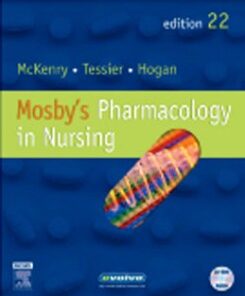Test Bank for Research Methods: Are You Equipped? Jennifer Bonds-Raacke, John Raacke
$35.00
Test Bank for Research Methods: Are You Equipped? Jennifer Bonds-Raacke, John Raacke
All resources are in electronic format and can be downloaded from your account or email – How to Download. Payments will be processed instantly after checkout. Please note that all sales are final and non refundable. If you still have questions, find answers on our FAQ page or just send us an email at [email protected], we will respond as soon as possible.
Chapter 2: Goals and Methods of Psychology
Multiple Choice Questions
1. Chapter 2 begins with an Are You Equipped? exercise describing research in which a movie theater owner flashed “Eat Popcorn” and “Drink Coca-Cola” at an exposure rate of 1/3,000 per second on the screen during the presentation of a movie. Which statement below summarizes the owner’s original findings that he shared with others?
a. There was no change in popcorn and soda sales.
b. There was a 50% increase in soda sales and a smaller increase in popcorn sales.
c. There was a 50% increase in popcorn sales and a smaller increase in soda sales.
d. There was a 50% increase in popcorn sales and 20% in soda sales.
2. Chapter 2 begins with an Are You Equipped? exercise describing research in which a movie theater owner flashed “Eat Popcorn” and “Drink Coca-Cola” at an exposure rate of 1/3,000 per second on the screen during the presentation of a movie. The owner originally reported an increase in popcorn and sodas sales for this method of advertisement. However, later the owner admitted to falsifying the data. Which statement below best describes why he admitted to falsifying the data?
a. because through the process of reporting and replication other researchers called the results into question
b. because the owner was ready to close his advertising business and did not want people to bother him
c. because through the process of hypothesis formation and collection of data other researchers called the results into question
d. because he did not use the scientific method
3. Chapter 2 begins with an Are You Equipped? exercise describing research in which a movie theater owner flashed “Eat Popcorn” and “Drink Coca-Cola” at an exposure rate of 1/3,000 per second on the screen during the presentation of a movie. This study sparked interest in which topic area in psychology?
a. subliminal perception
b. monocular perception
c. personal introspection
d. personal perception
4. Which of the following is a goal of psychological research?
a. describe
b. explain
c. predict
d. all of the above
5. Which of the following is a goal of psychological research?
a. explain
b. predict
c. influence
d. all of the above
6. Which of the following is not a goal of psychological research?
a. explain
b. predict
c. cure
d. influence
7. Which of the following is not a goal of psychological research?
a. to describe behavior
b. to provide therapy
c. to predict future behaviors
d. to influence behaviors
8. Which of the following is an underlying goal for all research?
a. describe
b. explain
c. predict
d. influence
9. Which of the following is the first goal of psychological research?
a. describe
b. explain
c. predict
d. influence
10. When you ask yourself the question, “What is going on here?” you are conducting research for which goal of psychology?
a. describe
b. explain
c. predict
d. influence
11. When research is conducted to determine the number of characters within a typical text messages, the goal of the research is to __________.
a. explain behavior.
b. describe behavior.
c. predict behavior.
d. influence behavior
12. Which of the following is the second goal of psychological research?
a. describe
b. explain
c. predict
d. influence
13. When you ask yourself the question, “Why is this happening” you are conducting research for which goal of psychology?
a. describe
b. explain
c. predict
d. influence
14. When you ask yourself the question, “What are the socio-emotional aspects of text messaging” you are conducting research for which goal of psychology?
a. describe
b. explain
c. predict
d. influence
15. Which of the following is the third goal of psychological research?
a. predict
b. explain
c. influence
d. describe
16. When you ask yourself the question, “Where will this behavior or event be exhibited” you are conducting research for which goal of psychology?
a. predict
b. explain
c. influence
d. describe
17. When a researcher examines how text messaging is used to terminate romantic relationships, which goal of psychology is her or she using?
a. influence
b. describe
c. predict
d. explain
18. What is the fourth goal of psychological research?
a. influence
b. describe
c. predict
d. explain
19. When you ask yourself, “How can I enhance or reduce the exhibited behavior?” you are conducting research for which goal of psychology?
a. describe
b. predict
c. explain
d. influence
20. When a researcher examines how commercials can increase or decrease text messaging usage, which goal of psychology is her or she using?
a. predict
b. explain
c. influence
d. describe
21. __________ research is conducted to further the collective knowledge about a topic within a field of study.
a. Basic
b. Psychological
c. Applied
d. Behavioral
22. __________ research is conducted to solve a practical problem within a field of study.
a. Basic
b. Psychological
c. Applied
d. Behavioral
23. The first three goals of psychological research can be categorized as __________ research.
a. basic
b. psychological
c. applied
d. behavioral
24. The last goal of psychological research can be categorized as __________ research.
a. basic
b. psychological
c. applied
d. behavioral
25. Think about how researchers would investigate the topic of depression. For the first goal, what would be the research question?
a. What is depression?
b. Why do people get depressed?
c. When or where will people get depressed?
d. How can I reduce depression?
26. Think about how researchers would investigate the topic of depression. For the second goal, what would be the research question?
a. What is depression?
b. Why do people get depressed?
c. When or where will people get depressed?
d. How can I reduce depression?
27. Think about how researchers would investigate the topic of depression. For the third goal, what would be the research question?












Reviews
There are no reviews yet.